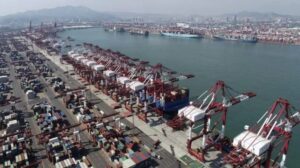Here’s why India withdrew from the world’s biggest trade pact
Stating that China-backed Regional Comprehensive Economic Partnership, or RCEP, failed to address India's concerns, it had opted out of it last year. India had mentioned that RCEP trade agreements were a threat to the circumvention of rules of origin due to tariff differentials
New Delhi, November 15, 2020: With China and 14 other Asia-Pacific nations signing the Regional Comprehensive Economic Partnership (RCEP) on November 15, India’s withdrawal from the world’s largest free trade bloc is hinting at an economic divide in the region.
Prime Minister Narendra Modi’s decision to not be the part of the RCEP in November 2019 shook the world, after negotiations to finalise the long-overdue agreement entered its final stages, said a news report.
 Stating that China-backed trade agreement failed to address India’s concerns, the latter opted out of it. India had mentioned that RCEP trade agreements were a threat to the circumvention of rules of origin due to tariff differentials. India had sought for fair agreement on the trade deficit and opening of services’ norms.
Stating that China-backed trade agreement failed to address India’s concerns, the latter opted out of it. India had mentioned that RCEP trade agreements were a threat to the circumvention of rules of origin due to tariff differentials. India had sought for fair agreement on the trade deficit and opening of services’ norms.
Another major reason for India pulling out of the RCEP was that the deal would have brought down the import duties on goods by 80-90 percent. Industry experts feared that this may result in a flood of imports which have a massive trade deficit.
Apart from this, during the previous negotiations, India had raised the issue of unavailability of Most Favoured Nation (MFN) obligations. Through this, the Indian government would have been forced to give similar benefits to RCEP nations that it used to give to others. Also, India even raised a red flag on the use of tariff reduction’s base year, which was kept as 2014.
Impact on India’s economy:
With India opting out of the RCEP, experts opine that India may lose massive investments, as it may have been the third-biggest economy. Also, analysts believe that if India had signed the agreement, its vulnerable sections’ consumers would have been impacted by paying more for goods.
Another major lookout for India is how it will tackle with the ASEAN countries in trade, after backing out from the RCEP. Citing the reason for this concern is India’s ‘Act East Policy’, which will be impacted after these Asia-Pacific nations strengthen their ties with China, Australia, Japan, and others.
During the United Progressive Alliance tenure, the India government agreed to explore an India-China FTA in 2007, and joined RCEP negotiations with China in 2011-12. Following this, the trade deficit with RCEP countries rose to $78 billion in 2014 from $7 billion in 2004.
Who signed the deal?
Earlier, during the annual summit of the 10-nation Association of Southeast Asian Nations (ASEAN) on November 15, 2020, RCEP representatives sealed the deal after 8 long years of wait.
The countries which signed the RCEP agreement include China, Japan, South Korea, Australia, New Zealand, and the 10 members of the ASEAN: Brunei, Vietnam, Laos, Cambodia, Thailand, Myanmar, Malaysia, Singapore, Indonesia, and the Philippines.







